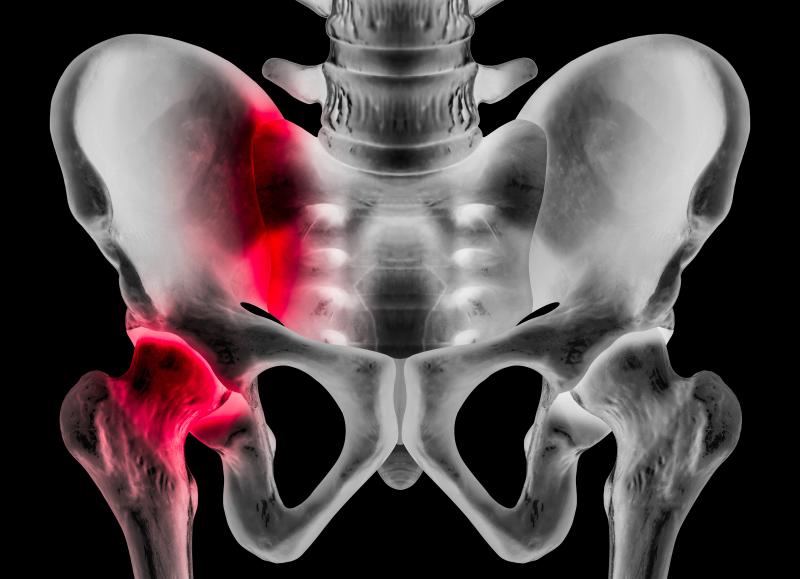
Use of bisphosphonates in women appears to neither prevent the development of hip osteoarthritis (OA) or pain nor delay radiographic changes over a 4-year follow-up, as shown in a study.
For the study, researchers used data from the Osteoarthritis Initiative (OAI), which involved 2,057 female participants (4,088 hips). Bisphosphonate use was defined as use frequency of at least three, including at baseline and during the subsequent 1, 2, 3, and 4-year follow-up visits.
Compared with nonusers, bisphosphonate users tended to be older and had lower BMI values across the cohorts of participants with radiographic hip OA (mean age 66 vs 59.7 years, mean BMI 25.8 vs 28.7 kg/m2), those with frequent hip pain (mean age 66.1 vs 59.8 years, mean BMI 25.7 vs 29 kg/m2), and those with any hip pain (mean age 66.2 vs 59.9 years, mean BMI 25.7 vs 28.9 kg/m2). In addition, most participants across all cohorts reported using analgesic drugs at baseline, with slightly higher proportions among bisphosphonate users.
Generalized estimating equations showed no statistically significant difference between bisphosphonate users and nonusers in terms of radiographic changes (incidence of radiographic hip OA: odds ratio [OR], 0.55, 95 percent confidence interval [CI], 0.26–1.17; transition of radiographic hip OA: OR, 0.78, 95 percent CI, 0.47–1.28) and hip pain (development of hip pain: OR, 1.04, 95 percent CI, 0.76–1.42; resolution of hip pain: OR, 0.99, 95 percent CI, 0.72–1.36) over 4 years.